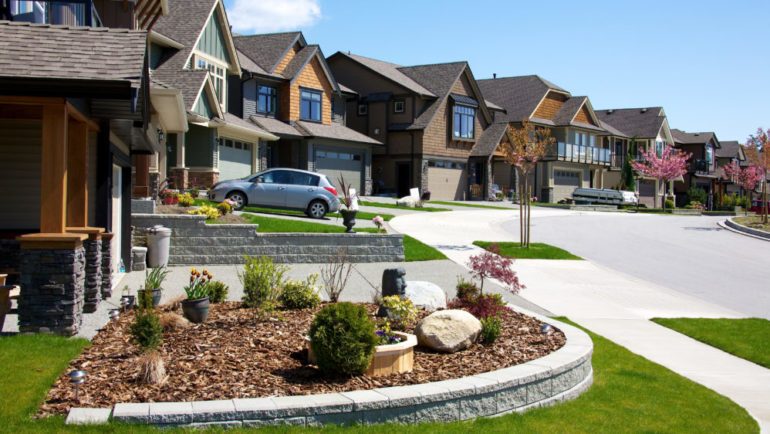When shopping for a home, don’t just look at the house; be sure to assess the neighborhood. Here’s what to look for and how to evaluate what you see.
Drive through. Nothing beats a tour of the neighborhood. Drive the streets around the house you are considering. Is the landscaping tidy? Are the homes well maintained? How many for sale or rent signs do you see? If so, ask your real estate agent why. Other points to take notice of include:
- Find out if the neighborhood has a homeowners association that governs the upkeep and appearance of the neighborhood.
- Drive the surrounding roads leading into the neighborhood. Are there eyesore properties with decrepit buildings, overgrown lots or areas that are zoned commercial? Is there a rail line nearby? Close proximity of such things will affect the value and enjoyment of your home.
- Are there playgrounds, parks, or a community pool easily accessible? Do you see children playing outside?
- How many trees are in the neighborhood? Are they scraggly and new or older mature trees?
- If there is a large open space of greenery nearby, find out the long term plans. It may be bucolic now, but a freeway later.
Walk through. Park your car and go for a walk through the neighborhood. You will likely see neighbors in relaxation mode. Are they pleasant and friendly, or standoffish? Ask their opinion on the neighborhood, and the nearby schools and shopping. You’ll likely get good insight into the community atmosphere.
Do your research. Go online and do some digging for crime statistics, school districts and local zoning. For crime information, check statewide law enforcement sites. Or go to sites like CrimeReports.com, CrimeMapping.com and NSOPW.gov, the national database for sex offenders.
Your state should have ratings on public schools in the area. If you think you may want a private school, search for those as well.
Commute times. Test the drive from your prospective new home to and from work during the times you would be traveling. Test the drive to local shopping and other attractions. What is traffic like during student drop-off and pick-up times? Is there easily accessible mass transit? A manageable commute to these daily destinations is an important part of your decision.
And the house itself? Where is the house placed in the neighborhood? Is it on a corner lot or cul-de-sac? Is it on the edge of the community and close to major roads or busy commercial centers? Do you see any fencing or sheds on adjacent lots that might be encroaching on your potential property?


